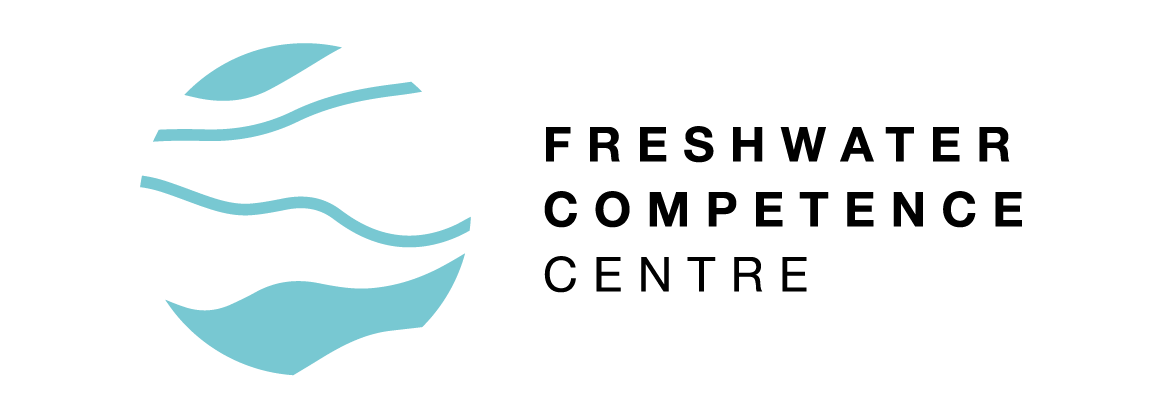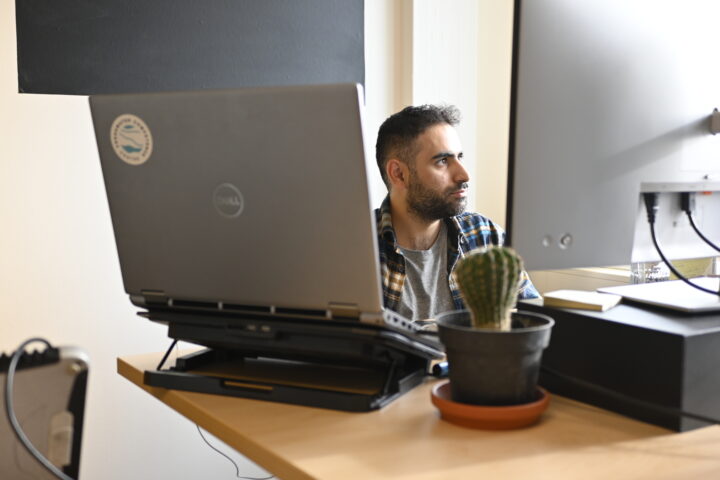Amin Sadeqi studies fluvial modelling in Finland to understand why the rivers have changed back home in Iran
Amin Sadeqi comes from the Azerbaijani side of Iran, the city of Zanjan, which is located in a mountainous region, 1600m above sea level. Amin’s father grew up in a village in a farming family, and his grandfather was a farmer. “As long as I remember, my father has been saying there used to be much more snow, and the river was full of water. My country is suffering from water mismanagement and overuse, which severe drought because of climate change has exacerbated. My father was always wondering what happened, why is everything so different from his childhood. It inspired me to study this topic in the university when I finished my high school studies. In the university in Iran, I got more familiar with hydrology and climate change and started thinking I should spend my life with this topic.”
A lot of rivers in Amin’s home region used to be permanent but are now temporary. There is the second-largest endorheic salt lake in the world called Lake Urmia that is almost dying. “This is mostly because of the construction of several dams, development of irrigated agricultural lands, although climate change tends to get all the blame for the problems. The problem, however, is caused by water mismanagement and overuse. I hope that in the future, I get a chance to do something for my home region.”
Finland is an ideal destination for a PhD in water science and technology
Amin says that when he was doing his master’s in Water Resources Engineering at the University of Tabriz, he had an opportunity to read many good studies from Finland, especially from the University of Oulu, regarding water elated and climate change topics. “Finland was, therefore, always an ideal destination for me. I started looking for PhD positions in Finland and found one here within the Green-Digi-Basin project.”
Amin does his PhD research in the Kuusinkijoki River in the North near Oulanka National Park. There is a plan to stop the operation of a hydropower dam to revive the threatened brown trout. Through the halting dam programme, they are going to release the water through an old natural channel that has been out of use and reach for perhaps 60 years, which is interesting for them to study. The research is focused on what happens after the water is released. He has defined different scenarios to study hydraulic processes downstream. In the next step, they will assess potential restoration outcomes for the environment.
Benefiting from joint infrastructure and wide expertise of the Freshwater Competence Centre organizations
The University of Turku has used its Otter unmanned surface vehicle (USV) to collect data where it was possible. In the rapids, the Otter could not operate, but the whole man-made channel right away after the dam, a part of the natural channel, a riverine lake downstream has been mapped with the USV. The University of Turku team also made measurements with ADCP’s to obtain discharge and flow characteristics and installed water level data loggers to collect water level time series.

The work is carried out in cooperation between several Finnish organizations, within the Freshwater Competence Centre. The Finnish Geospatial Research Institute (FGI) with the lead from research professor Harri Kaartinen has collected laser scanning data of the river by helicopter. Associate Professor Hannu Marttila and his group at the University of Oulu have published an article about the fish habitat in Kuusinkijoki. Amin’s project is interconnected with this research, and they are working jointly in the area.
So, what will happen to the Kuusinki river?
“I am currently building the model that will simulate different scenarios. There are already some studies about demolishing dams affecting the downstream flow regime, sediment, and vegetation.” Amin explains. This study, however, is unique in that the group are using state-of-the-art equipment to collect field-based data to obtain high-resolution information from the study area. And then, utilizing recent modern modelling techniques to simulate river behaviour in boreal river systems. “Furthermore, the way that the natural channel has been out of use for such a long time, it is interesting to see what will happen to it when the water is released. And it is quite challenging!”
New year, new career plan? Freshwater-related DIWA PhD pilot positions in the Universities of Turku, Oulu, Aalto University and UEF are a great opportunity to learn about the specific expertise of each University itself – but also benefit from the tight collaboration, joint field campaigns and the unique Hydro-RI infrastructure between the organizations.
Apply by 20th April 2024 through: https://digitalwaters.fi/phd-pilot/apply/
Text: Annukka Pekkarinen. Images: Annukka Pekkarinen, Petteri Alho

